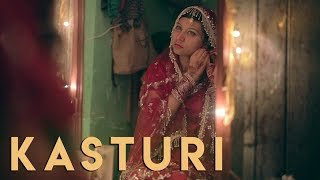🎬 Overview
Kastoori is a poignant Marathi-Hindi indie film that follows the life of Gopi, a 14-year-old boy from a lower-caste Dalit family in rural India. He performs deeply degrading jobs to help support his family: cleaning toilets, working in hospitals doing post-mortem preparations, and assisting in manual scavenging. Yet Gopi is also a bright student, one of the top performers in his school. This stark contradiction — between his intellectual promise and the dehumanizing social role he’s assigned — lies at the heart of the film.
🧒 The Protagonist: Gopi
Gopi is not just a character; he’s a symbol of every child caught between aspiration and oppression. He’s intelligent, curious, and sensitive, yet burdened by the weight of his caste. His longing to escape the stench of his life — both literally and metaphorically — is symbolized by his obsession with kastoori (musk), a mythical fragrant substance his grandmother tells him about. He dreams of applying this musk to rid himself of the foul odor that others use to define and ostracize him.
The tragedy is that Gopi doesn’t stink because of poor hygiene. The smell is the societal perception of untouchability. It’s the invisible mark of caste, the inherited burden of being born into a family associated with dirt, death, and impurity. In his mind, if he can find kastoori, he can become “clean,” respected, maybe even loved.
🏠 The Family Dynamic
Gopi’s family mirrors many lower-caste rural households. His father is jobless, alcoholic, and emotionally absent. His mother is exhausted, hardened by poverty, and practical to the point of cruelty. At one point, she tears his textbooks apart, screaming that studying will never help him earn a living — a chilling moment where hope is literally shredded in front of our eyes.
His grandmother, however, provides a whisper of magic, telling him about the musk. This intergenerational tension — between despair and wonder, realism and imagination — helps shape Gopi’s inner conflict.
👫 Friendship and Innocence
Gopi’s friendship with Adim, a Muslim boy, adds a layer of warmth and companionship to the story. Their bond, free of judgment, contrasts with the cruelty of the adults around them. Adim helps him earn money, supports his ideas, and doesn’t care about caste — offering a rare example of pure, human connection in an otherwise alienating world.
🎭 Symbolism and Metaphors
- Kastoori (musk): Represents dignity, self-worth, and the mythical possibility of being free from caste stigma.
- Smell: The olfactory motif runs throughout the film. The “smell” that follows Gopi is not physical, but symbolic of his caste identity.
- Sanskrit Essay Competition: Gopi prepares to give a speech on Republic Day — the day India celebrates its democracy. The irony is heavy: a boy denied basic dignity is asked to write about a nation’s freedom.
- Manual Scavenging and Post-Mortems: These jobs symbolize societal rot — both literal and structural — and the caste system’s dehumanizing efficiency.
🎥 Direction & Cinematic Style
The film takes a realist approach. There’s no background music manipulating emotions. Scenes of post-mortem work or toilet cleaning are shown with quiet restraint — not for shock value, but to confront the audience with reality. The camera often lingers on Gopi’s face, capturing his silent frustration, quiet joy, and buried rage.
There are no dramatic speeches or exaggerated performances. Instead, the film relies on the natural rhythms of village life, the banality of hardship, and the occasional flickers of rebellion in Gopi’s eyes.
📚 Social Commentary
Kastoori doesn’t lecture about caste. It shows it — how deeply it’s embedded in daily life. The way Gopi is treated at school, the insults hurled casually by peers, the way adults discourage his ambition, the assumptions about his “smell” — all demonstrate how caste is not just a label but a lived reality.
The film also explores how systemic inequality robs children of dreams. Gopi isn’t just struggling against poverty — he’s struggling against a worldview that says he deserves this life, that says he was born for this kind of work. And when he tries to escape, through education or fantasy, he’s punished for overstepping his bounds.
🎭 The Ending (Spoiler-free Insight)
The ending of Kastoori doesn’t offer a magical resolution. There’s no deus ex machina, no savior figure arriving to lift Gopi out of misery. Instead, the film quietly challenges us: How long will we let children like Gopi search for something as basic as dignity?
The beauty of the film lies in its restraint. It doesn’t shout — it whispers. But that whisper lingers. It asks: What does it mean to smell “bad”? What makes a life valuable? Can a boy who touches death every day still believe in dreams?
🌟 Final Thought
Kastoori is not just a film. It’s a mirror. It reflects a part of India — and humanity — that most prefer to look away from. In doing so, it elevates the ordinary pain of a marginalized child into something universal, poetic, and unforgettable.
If you’re looking for a film that moves, disturbs, and enlightens — not through spectacle, but through truth — Kastoori is essential viewing.

